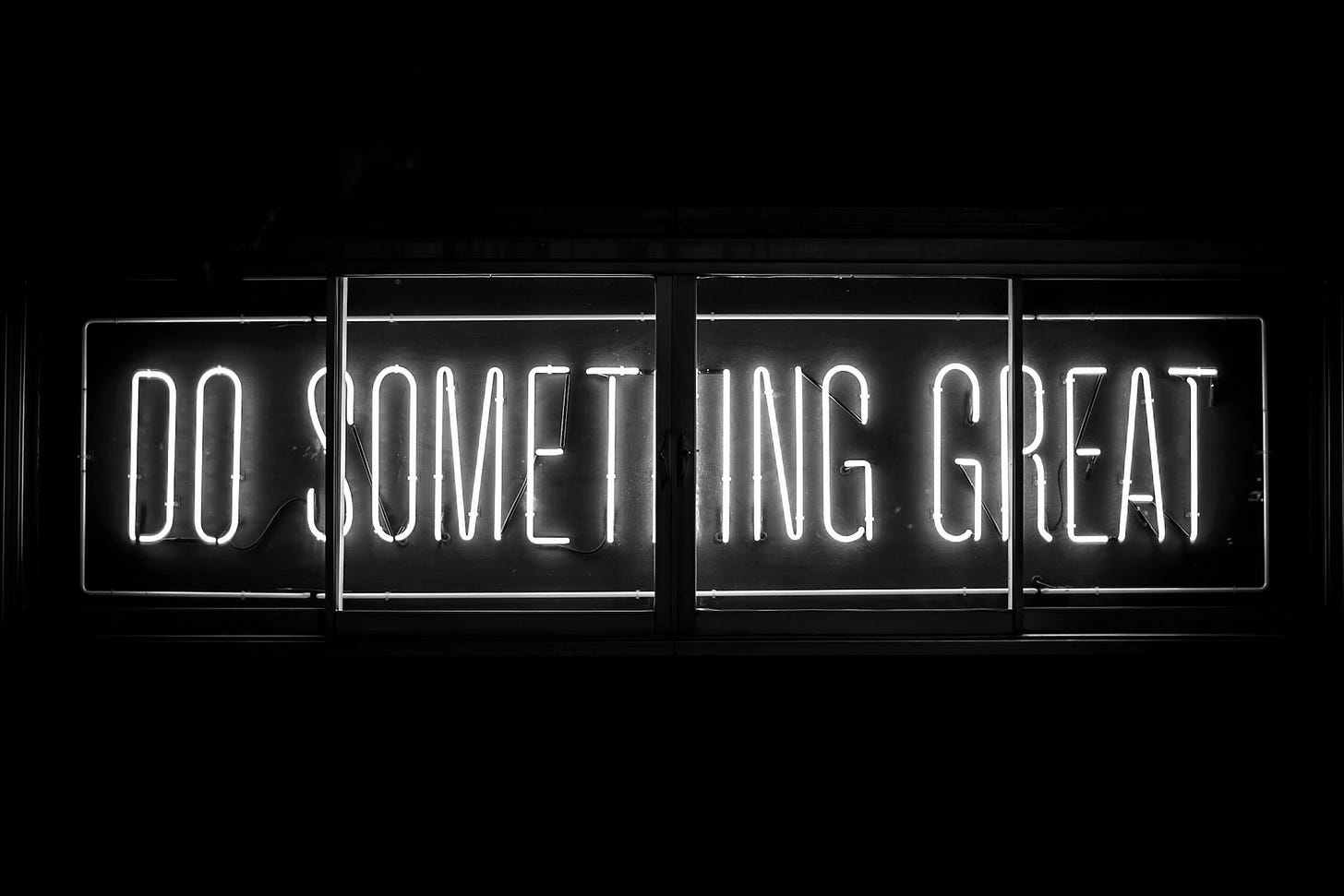Exploring the Role of Multi-Scale Planning in Wellbeing-Driven Productivity
When underpinned by a wellbeing-first mindset, strategic multi-scale planning can help you thrive personally and professionally – let's explore how.
You know you do your best work when you are healthy and rested.
But …
There is just so much to do and so little time. The work has to come first. You'll try to squeeze some rest in at some point…
Does this sound familiar?
It's challenging to prioritise your wellbeing without a plan. The same goes for doing your best work – it all needs a plan.
When underpinned by a wellbeing-first mindset, strategic multi-scale planning can help you thrive personally and professionally – let's explore how.
What is Multi-Scale Planning?
Professor, author, and slow productivity specialist Cal Newport coined the term "multi-scale planning" to refer to planning across multiple time horizons (for example, your year, quarter, month, week, and day).
You can use multi-scale planning in your professional and personal life, but I tend to focus on using it personally (although some aspects of work and business creep in). My experience of burnout taught me that when you focus on thriving personally, your work will benefit – this is the foundation of wellbeing-driven productivity.
The Mindset
Before exploring multi-scale planning, it's important to address mindset. The only way all this planning will be beneficial is when you understand the following:
To do well, you need to be well.
This article focuses on you, "the person", instead of you, "the professional", because you are a person first. Looking after your personal needs will make you an even better professional.
You can, of course, use these planning strategies professionally, but start using them personally first.
Logistics
Multi-scale planning usually starts with an annual review. Then, you set goals for the year, which are reviewed at different time horizons – I have presented this article in that order.
That said, you can start applying these principles at any time. Pick the closest high-level time horizon (year, quarter, or month) and start there. Also, bookmark this article to read again in December.
Capture every plan and review in your journal or notes app. Don't overthink your choice of tools; document everything.
Now, we can start multi-scale planning.
Annual Review
Your annual review is an opportunity to reflect on your year.
If you set goals for your year-in-review, you should first assess your progress. Did you achieve your goals? If so, celebrate. If not, what stopped you? Take the opportunity for an honest, documented reflection.
Next, it is time to review your year more broadly. Decide on a selection of life categories to reflect on; for example, you might choose health and wellbeing, personal finances, travel and culture, and learning. Choose as many as you like and make a note of them.
Then, review each category using the Plus Minus Next Method. Under "plus," write as many things you can think of that went well in this category. Under "minus," write things that did not go well. Under "next," write the next steps you could take. Spend three minutes on each category (a minute each on plus, minus, and next).
After your review, summarise your year by identifying your most significant achievements for the year and your biggest challenges.
The next step is goal setting; your goals are the pillars of your long-term plan.
Goal Setting
Set three to five SMART goals for yourself – ideally, one of these goals will focus on wellbeing.
If you do not like the SMART acronym, focus on ensuring your goals are specific and realistic (including some level of challenge).
Then, break each goal into actionable steps, identifying the underpinning processes and resource requirements.
Remember, as illustrated in the example below, you are focusing on your personal development; however, you might have some goals that support your professional development.
Goal: to achieve a merit grade for the first year of my part-time master's degree.
I will achieve this by:
Putting study time on my calendar – 10 hours a week.
Starting an accountability study group via WhatsApp.
Informing my friends and family of the time commitment for my course.
Setting up notetaking/research systems in a tool I am familiar with (Notion).
Devising a study timeline that identifies milestones and adding this to my calendar.
The systems and processes I need are:
Google Calendar, WhatsApp, Notion, and University systems.
To make your goals achievable, you can allocate them to quarters of the coming year. That way, you are not working on them all simultaneously.
The final (optional) stage of your goal-setting process is identifying a word or theme for the year to remind you of your primary goal or overarching aim.
We achieve goals when they are visible. Display your word or theme for the year in your office or on your mobile phone wallpaper. You could treat yourself to jewellery with your word for the year engraved on it.
Monthly, Weekly, and Daily Plan and Review
You now have a set of goals and a clear understanding of what you need to achieve them.
Another way to keep your goals visible is through a monthly and weekly planning and review cycle supported by some low-friction daily routines. These routines also prioritise wellbeing and help you stay organised.
Monthly Plan and Review
Create a short plan at the start of each month that answers the following questions:
Which goals will you focus on this month?
What actions will you take towards achieving your goals?
What is your theme or priority for the month?
Ensure you add actions to your task list.
At the end of the month, review your plan. Did you achieve what you set out to? If so, celebrate that. If not, why not?
Weekly Plan and Review
The most important time horizon in multi-scale planning is what you do weekly. You will look at more than just your goals in a weekly plan and review session. This routine will help you optimise your energy, prioritise your wellbeing, and get things done.
Make a weekly plan either at the start of the week or at the end of the previous week. Your weekly plan should be an opportunity to:
Select your priority or focus for that week.
Choose the goals you are working towards that week (remember to add actions to your task list).
Notice scheduled commitments like appointments.
Time-block your week.
Time-blocking your week is the key to balancing wellbeing with getting things done. Look at the space between your scheduled commitments, then block out time on your calendar to work on specific projects and tasks.
Your weekly review should happen at the end of the week and is an opportunity to:
Look back on the week. Did you achieve what you set out to in your plan?
Reflect more broadly on the week – use the Plus, Minus, Next Method you used in your annual review.
Reflect on your health and wellbeing.
Review the progress you have made towards goals.
Close any open loops and carry out weekly administration tasks; for example, you might aim to get to email Inbox Zero during your weekly review.
The weekly review only works when you do it consistently. Schedule it in your calendar and honour that appointment as you would if it were an appointment with your manager.
Daily Plan and Routines
A common problem amongst professionals needing help prioritising their wellbeing is when the boundaries between work and home become blurred (for example, taking work home to finish at the weekend).
Signalling the start and end of the day with a start-up and shut-down routine is a step towards reinforcing these essential boundaries. Start-up and shut-down routines only take a few minutes, but they should still be on your calendar.
Here is an example of a start-up and shut-down routine:
Start-Up
Check my calendar and adjust as needed (remember to schedule breaks!)
Check my task list and add task time to my calendar if I still need to.
Do a one-minute breathwork exercise to start my day (Breathwrk app).
Shut-down
Look ahead to tomorrow on the calendar – adjust as needed.
Close as many open loops as possible (e.g. adding tasks to the task list).
(Optional) one-minute guided meditation in Headspace app.
Over to You
You do not have to wait until the end of the year to start using multi-scale planning, nor do you have to use all of the elements I have outlined in this article. Why not start with a weekly plan and review? Then, try introducing a start-up and shut-down routine. Find what works for you and develop your own wellbeing-driven, multi-scale plan.
If you enjoyed this article and would like access to a library of templates, resources, and support from me, please upgrade your subscription (just £50 a year or £5 a month). Thank you. I appreciate your supporting my work.








